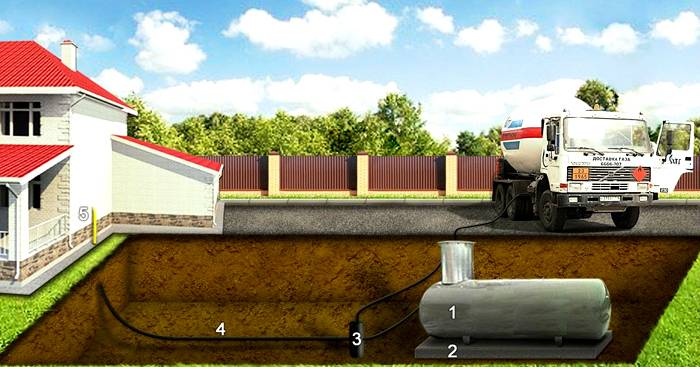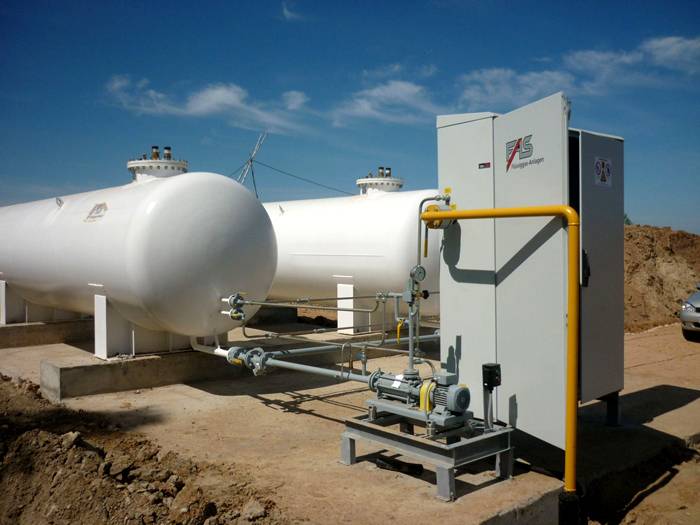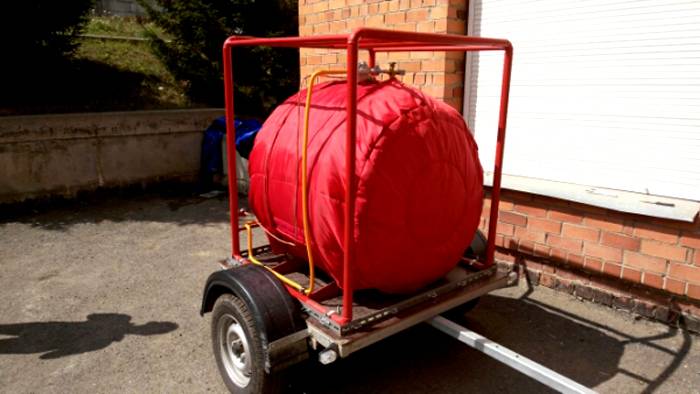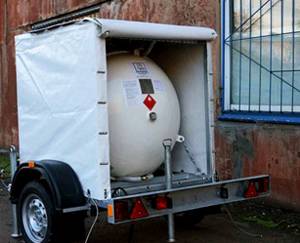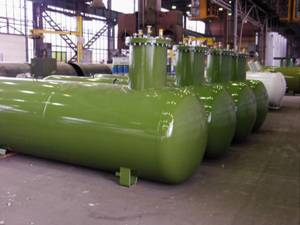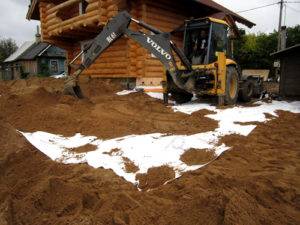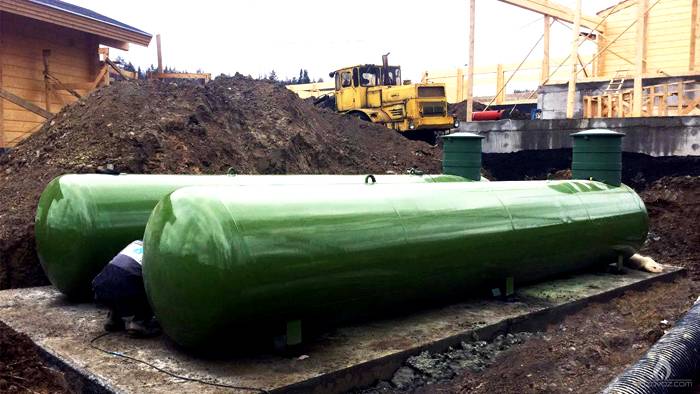Choosing gas tanks for a country house: prices, reviews and installation options
When thinking about building a house, you should always think over the gas and water supply system, as well as providing the building with electricity. Even if the room will be used only for recreation, heating will come in handy in the cold season, and it is always convenient when there is something to heat food on. Therefore, more and more often, consumers choose gas tanks for a country house: prices, reviews of which are different depending on the technical characteristics and reliability of the manufacturer. At the same time, there are certain standards for the installation of equipment.
The content of the article [Hide]
Gas holders - what is it: technical characteristics and types
Gas holders are metal tanks for storing liquefied propane-butane in gaseous or liquid form. The tank is manufactured in accordance with all safety standards, must be reliable and durable. The product is based on high-quality steel, treated with a special solution against corrosion.
In addition to the container, the equipment usually includes a sensor that measures the volume and pressure of the gas, as well as safety valves. In this case, there are a dispensing valve, a filling sensor and a filling valve, which are necessary for filling and dispensing fuel.
The models are different in the type of installation, the volume of the storage tank, but they are necessarily safe for private use.
Functioning principle
The principle of operation of the equipment is extremely simple:
Usually the equipment is mounted for private residential premises, where they are going to live all seasons, including heating.
Thinking what is cheaper: a gas tank or main gas? One thing can be noted: gas is in any case one of the most cost-effective fuel options for heating. Connecting to the backbone is cheaper than installing equipment. At the same time, prices for the supply of fuel from utilities are constantly growing. The reservoir can be filled once a year at the best price.
Types of gas tanks
Equipment options are different for the type of installation. Several subgroups can be distinguished:
And also divided by the type of installation into a vertical or horizontal version.
In the countries of the European Union, you can often find ground tanks that require less installation costs, however, for the Russian cold weather, this option is practically inapplicable.
Underground installation has a number of advantages:
That is why in Russia there are underground options that require more time for installation, but less for maintenance.
Related article:
Mobile options
Mobile gas tanks for a country house, prices, reviews of which are different, are perfect for those who only spend vacations in a private building. This mobile unit can be taken with you, and additional installation is not required.
The complete set of the mobile version of the units includes a reducer that regulates the gas pressure, a pressure gauge and an indicator of the fuel level in the tank. The largest tank volume is 500 liters. Here is one popular model with specifications and price.
Table 1. Characteristics of a mobile gas tank with a trailer
However, for autonomous gasification of a private house, where the gas consumption is higher, stationary equipment is needed, reviews of which are mostly positive.
Gas holders for a country house: prices, reviews for vertical and horizontal models
Considering vertical and horizontal gas tanks for country houses at prices and reviews, the first options did not gain popularity among consumers. The vertical version has a small evaporation surface and low productivity, so it is often necessary to mount two tanks at once.
However, a number of advantages can be distinguished, which include pressure stability.
Horizontal options can also be mounted several at a time, connecting them to one gearbox. The advantages include high performance, but it drops after using half the capacity. To avoid a large loss of power, an additional gearbox is mounted.
To calculate the cost of heating for a house of 200 m², some data are used:
Rating of gas tank manufacturers
According to reviews about gas holders for heating a country house, 4 companies can be distinguished, which are recognized as the best:
Table 2. Models of gas tanks AvtomomGaz
Having chosen the optimal volume for yourself, you can easily order the basic equipment and carry out your own installation. Or contact an organization by ordering a turnkey installation.
Let's analyze the main nuances of self-installation.
Features of the installation of an underground horizontal tank
Self-installation of a gas tank in a private house will cost less at a price, but it will require the rental of special equipment and the presence of certain skills.
Table 3. Sequence of installation of an underground horizontal tank
To make it easier for you to imagine how the editing takes place, watch the video on the topic.
Video: installing a gas tank

If you have a special technique for digging a foundation pit, as well as equipment for testing gas tanks, you can start installing the equipment yourself. If not, you can contact the professionals and order a turnkey installation.
Installation of gas tanks for a turnkey private house with prices
In different cities there are many organizations that offer the sale and installation of a turnkey gas tank. For example, in Moscow, the GazTeploStroy company offers tanks from the Eurostroy manufacturer with full installation.
Autonomous gasification of a house with an area of up to 200 m² will cost 195 thousand rubles. This price will include:
Additionally, you can order land work for 15 thousand rubles. and refueling will cost 36 thousand rubles. The cost of turnkey work varies depending on the volume of the tank, but in all organizations it starts from 200 thousand rubles.
In custody
Gas holders replace the main gas pipeline and ways to provide a private house with fuel for the entire heating season.You can install them yourself or order a turnkey installation. In any case, the purchase of such tanks is much more economical than conducting a heating system from the mains or using another type of fuel.



